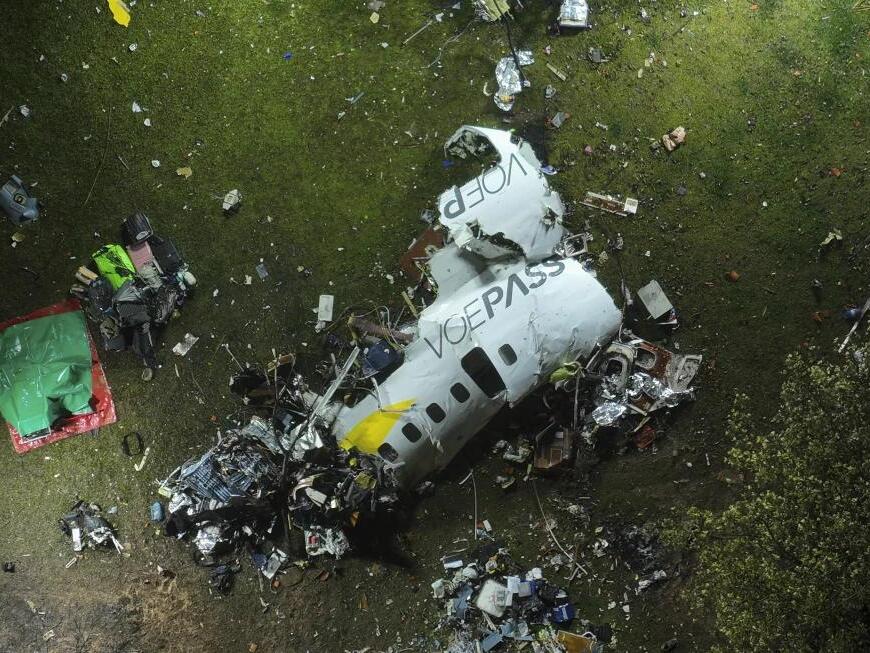Physical Address
304 North Cardinal St.
Dorchester Center, MA 02124
Physical Address
304 North Cardinal St.
Dorchester Center, MA 02124

SAO PAULO (AP) — A preliminary report released on Friday revealed that the pilots of a Brazilian passenger plane, which crashed last month and killed all 62 aboard, reported issues with the aircraft’s de-icing system. While investigators refrained from definitively linking this issue as the cause of the accident, the findings indicated strong evidence that ice accumulation on the wings contributed significantly to the disaster.
The fateful flight took off on August 9 from Cascavel, in the Parana state, and was headed for Sao Paulo’s Guarulhos international airport. Tragically, the plane crashed into the backyard of a home in a gated community in Vinhedo, located roughly 80 kilometers (50 miles) northwest of central Sao Paulo.
According to the report, weather conditions in the area at the time of the crash suggested the likelihood of ice formation. Investigators analyzed cockpit voice recordings that contained remarks from the pilots acknowledging ice accumulation and a malfunctioning de-icing system. Paulo Fróes, who is with the air force’s center for investigating air accidents, noted that just two minutes before the crash, the copilot remarked, “A lot of ice.”
Data from the aircraft’s flight recorder also indicated fluctuations in the operation of the de-icing system, suggesting it turned on and off multiple times during the flight. Carlos Henrique Baldin, the head of the investigation division at the air force center, mentioned, “There are still many doubts. This accident shouldn’t have happened, not in the conditions in which the plane was flying and operated. It had protection equipment.”
As the investigation continues, experts are assessing whether the ice buildup on the wings caused the loss of lift that led to the crash. Henrique Hacklaender, president of the national aviators’ union, pointed out that while it cannot be definitively proven that ice was the cause of the accident, there are substantial indications that it played a notable role.
In analyzing the de-icing system on the ATR 72 model, Hacklaender noted that it is controlled manually by pilots. The preliminary report indicated that the system had been activated during the flight, signifying efforts were made to mitigate ice accumulation. However, it remained unclear whether the system functioned effectively.
The air force’s investigative body, known as Cenipa, is pursuing further inquiries into the accident’s cause without a predetermined timeline for completion. They are also collaborating with a Federal Police investigation to ascertain any potential liability surrounding the incident.
The ATR 72 aircraft is manufactured by a French-Italian partnership and is commonly employed for short-distance flights. This particular model has historically been associated with several accidents, resulting in approximately 470 fatalities since the 1990s, based on data from the Aviation Safety Network.
This tragic event marks the deadliest airline disaster since January 2023 when a Yeti Airlines aircraft, also an ATR 72, crashed in Nepal during its landing approach, resulting in 72 fatalities. A subsequent investigation indicated pilot error as the primary factor in that incident as well.
The investigation into this latest crash is particularly poignant, given the history of accidents linked to ice accumulation in similar aircraft. For instance, an American Eagle ATR 72-200 crashed on October 31, 1994, after losing control due to ice buildup while circling in a holding pattern. That accident also claimed all 68 lives on board and prompted regulatory bodies to issue guidance advising pilots against using autopilot in icy conditions.
As investigators continue their work, the aviation community remains on high alert for insights and lessons learned that may enhance safety measures to prevent future tragedies.
Source: Associated Press



